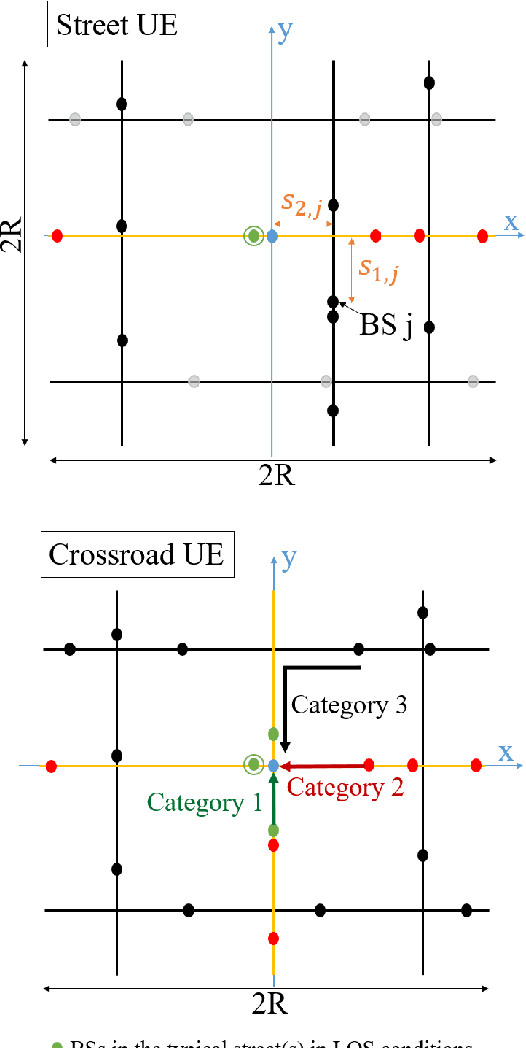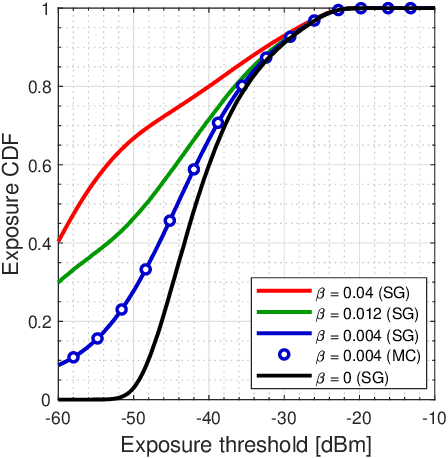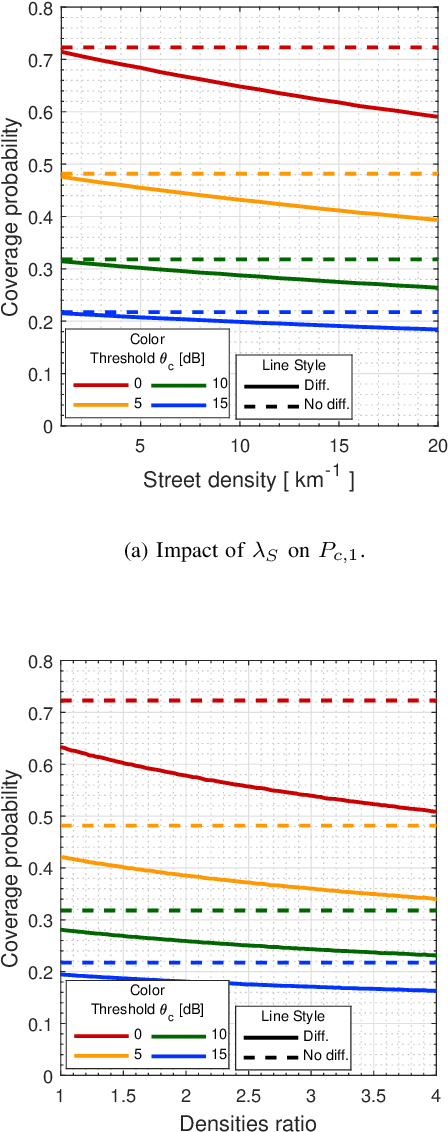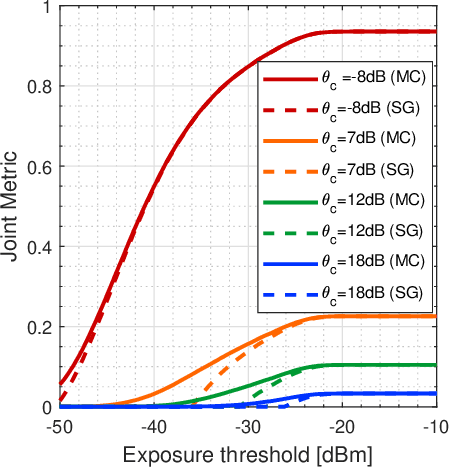Joint data rate and EMF exposure analysis in Manhattan environments: stochastic geometry and ray tracing approaches
Paper and Code
Jan 26, 2023



The objective of this study is to jointly analyze the data rate and electromagnetic field (EMF) exposure in urban environments. Capitalizing on stochastic geometry (SG), a network level analysis is performed by modelling these environments via Manhattan Poisson line processes (MPLP). Using this framework, a number of performance metrics are derived: first moments, marginal distributions and joint distributions of the data rate and exposure. In addition, the original Manhattan model is generalized to include advanced features: corner diffraction, presence of potential blockages in streets, and users positioned at crossroads. As a second approach, deterministic ray tracing (RT) is utilized to compute the same metrics. The two methods are shown to provide close results on the condition that the model parameters are coherently selected. Furthermore, the numerical results enable to gain insight into several aspects: the role of the propagation mechanisms in the performance metrics, existing trade-offs between the rate and exposure requirements, as well as the impact of the user location (at a crossroad or in a single street). (This work has been submitted to the IEEE for possible publication. Copyright may be transferred without notice, after which this version may no longer be accessible)
 Add to Chrome
Add to Chrome Add to Firefox
Add to Firefox Add to Edge
Add to Edge